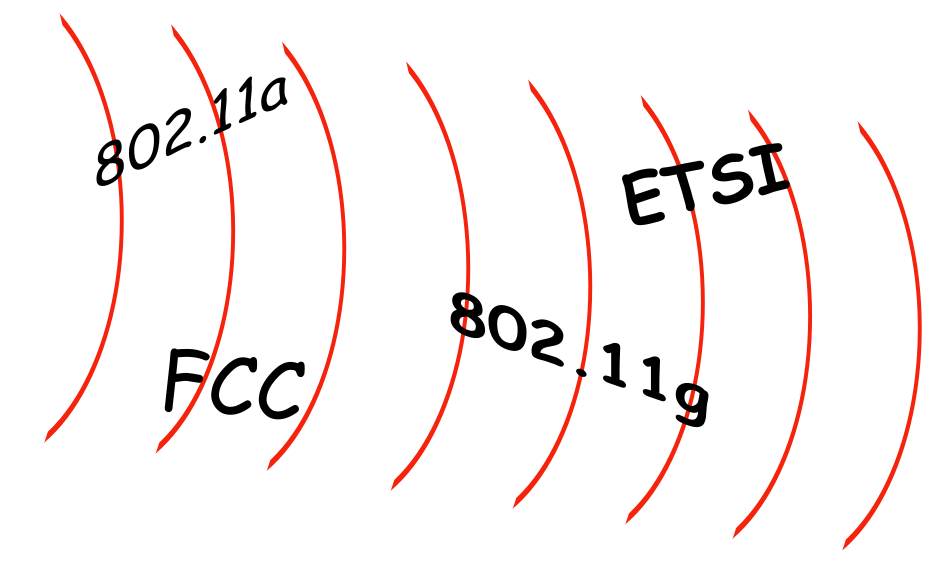 Since in my previous post I have talked about issues related to the deployment of WiFi networks, it is only fair if I step back a bit and provide some explanations about WiFi standards and how and why they are regulated.
Since in my previous post I have talked about issues related to the deployment of WiFi networks, it is only fair if I step back a bit and provide some explanations about WiFi standards and how and why they are regulated.
Wireless standards are those related to the wireless communications in general, and in particular:
There are two main bodies in the world that promote wireless standards. They are the FCC in the United States and the ETSI in Europe. Most of the other countries abide to the regulations of these two main bodies, but also participate in the definition of the standards themselves.
This is all done to guarantee that wireless devices, when moving from one location to another, always respect the local rules (frequencies, channels bandwidth, type of encoding, and so forth) so that they can connect to the wireless networks almost seamlessly.
Companies that build the wireless devices must abide to the same rules to guarantee their own customers that they can connect to the networks wherever they are and whatever is the brand of the network devices through which they access the wireless networks. Think, for example, if a WiFi router was built using a protocol that only other devices of the same brand could understand. It would be totally useless and nobody would buy it. Who would want a router that does not allow you to connect your smart-phone, or your laptop, or your tablet?
Specifically for WiFi communications, and in addition to the governing bodies FCC and ETSI, the WiFi Alliance, which is a non-profit consortium of several constructors, oversees the correct application of the IEEE 802.11 standards for WiFi communications. They do so by promoting the adoption of these standards by all the industries, and also by providing a certification program for the WiFi devices.
The currently most used standards of the IEEE 802.11 are:
- 802.11a, with rated bandwidth of 11 Mbps, or about 1.4 MBps
- 802.11b, with rated bandwidth of 11 Mbps, or about 1.4 MBps
- 802.11g, with rated bandwidth of 54 Mbps, or about 6.75 MBps
- 802.11n, with rated bandwidth of 300 Mbps, or about 37MBps
- 802.11ac, with rated bandwidth of 1.331 Gbps, or about 166MBps
Most people is familiar with these names nowadays, because they find them used in their home routers, or computers, or even the smart-phones. On the other end, 802.11 standards are continuously updated and a new standard comes out so often, allowing for continuously incrementing the bandwidth they can provide, and increasing their level of security.
People that works in the networking field needs to keep themselves continuously updated on the latest evolution of the standards, if they want to be able to satisfy their customers and stay ahead of the competition.It is really easy to find costly installations that do not work properly because some detail was not given the proper consideration when designing the network, like throughput vs. bandwidth, or cross-interference from adjacent channels, or race conditions caused by access points that compete with each other in providing access to portable devices.
Dazzling Solutions is always available to provide consultation on the subject, as well as providing support for designing new WiFi networks or upgrade them to bring them to the state of the art and maximize their performance. Please contact us for a free estimate.




Leave a Reply